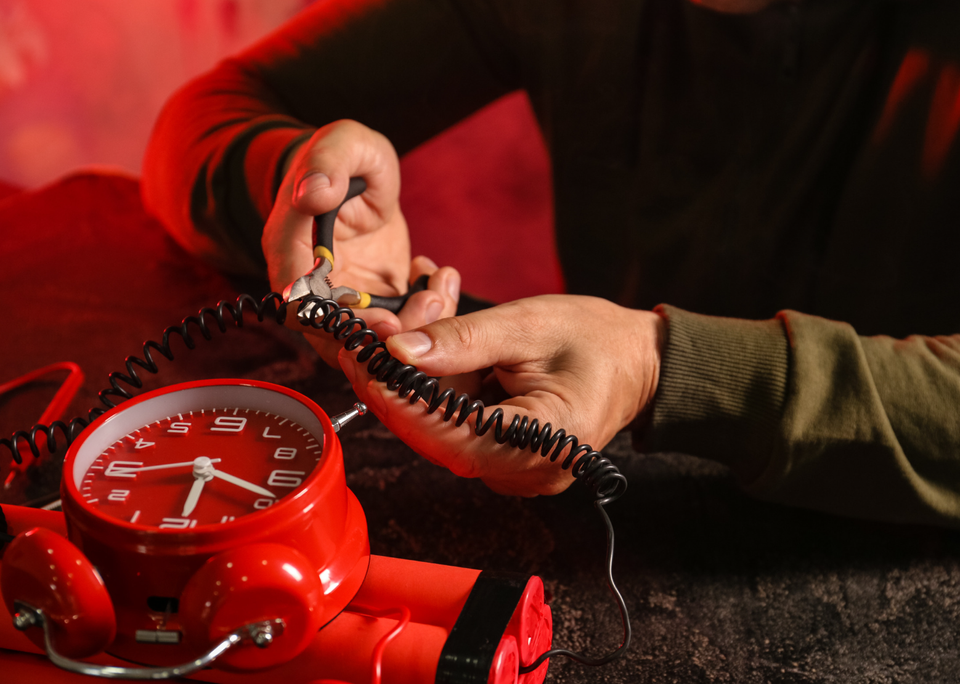Outsmarting the Tyranny of Urgency

Most of the burnout I see—in coaching rooms, team offsites, and the quiet confessions of leaders who can’t sleep—is urgency-related. Full stop.
The 60-hour weeks? Urgency.
The five competing priorities that all feel like top priority? Urgency.
The constant low hum of anxiety, even when you’re technically “off”? That’s urgency too.
We’ve come to treat urgency like oxygen in the workplace. Unseen, unexamined, always present. And because it’s everywhere, we stop questioning it. We adapt to it. We speed up to meet it. And over time, we lose the ability to tell the difference between what’s urgent and what’s just loud.
I say this with deep compassion because I’ve been there, too. It’s easy to let urgency dictate your tempo. It starts small: a Slack ping you answer at 9:00 p.m., a “quick” deck you throw together during lunch, a vague request from someone important that you drop everything to fulfill. Each action, on its own, seems benign. But stack a few dozen of those moments together and you’ve got a life that feels like a game of whack-a-mole.
When we move at the speed of urgency, we sacrifice intention and resonance. We stop asking basic, grounding questions like:
- Is this the best use of my time?
- What’s actually needed right now?
- What will be felt, not just noticed?
- What rhythm allows me to do my best thinking?
Instead, we start living by reflex. And reflex is not where our best leadership lives.
Urgency isn’t just a thief of time—it’s a shapeshifter. It disguises itself as “being a team player,” “taking initiative,” or “being responsive.” And let’s not ignore the real social and cultural forces at play: urgency rewards those who already feel they can’t say no. People with marginalized identities, new leaders trying to prove themselves, parents juggling home life—they often carry an extra layer of pressure to be always available. And burnout hits harder and faster when your “no” doesn’t feel like an option.
One of the hardest truths I’ve had to accept—and coach others through—is this: we give urgency its power. Not all of it, but more than we’d like to admit. We assume things need to happen faster than they do. We internalize the expectations of others without verifying them. We decide that dropping everything equals professionalism. And we teach the people around us to expect us at a pace that’s unsustainable.
The result?
- Fractured focus
- Mediocre output
- Deep fatigue
- And eventually, resentment
So here’s one of the most deceptively simple and powerful practices I offer to clients who feel stuck in reactive mode: Ask “Can this wait?”
That question alone can begin to rewire the speed reflex. It creates just enough friction in the moment to pause the autopilot. Whether you're responding to a Slack, a meeting request, or an idea that popped into your own head at 10:30 p.m.—Can this wait? becomes a compass. Sometimes the answer is no. But far more often, the answer is yes. Or even: “I’m not sure, let me find out.”
“Can this wait?” isn’t about avoiding responsibility. It’s about returning to choice. It’s a boundary wrapped in curiosity. It puts you back in conversation with the task instead of being swept away by it.
When I work with teams on this, we don’t just talk about “time management.” We talk about urgency discernment. How do we build a culture that’s capable of asking, “What’s truly important right now?” How do we train ourselves and each other to pause long enough to sort signal from noise?
Some of the most practical tools are also the simplest:
- Ask “By when?” every time someone says ASAP.
- Use calendar blocks as a signal to others—and yourself—of what actually needs your attention.
- Normalize 24-hour response windows. You’re not a pizza.
- Say “I’ll circle back in an hour” instead of replying instantly to everything.
- And, of course, ask “Can this wait?”
And yes—sometimes slowing down will feel edgy. Especially if you’ve built an identity around being quick, helpful, or always-on. But that’s exactly why it matters. Choosing to work at a pace you can sustain isn’t laziness. It’s leadership.
But here’s the kicker: urgency feels fast, but it’s actually inefficient. People make more mistakes. They double back. They miscommunicate. Whole teams spin out fixing problems that came from rushing in the first place. Urgency often creates more work than it solves.
When you shift from urgency to intentionality, you don’t just protect your energy—you open up space for better thinking. You become the kind of leader who listens beneath the noise, who sees the bigger picture, who doesn’t confuse speed with progress. You gain influence not by being the fastest responder, but by being the clearest voice in the room.
And that starts with curiosity.
Curiosity is what loosens urgency’s grip. It interrupts the knee-jerk yes. It allows you to ask, What’s really going on here?instead of How fast can I get this done? It turns a moment of pressure into a moment of exploration.
- Why does this feel urgent to me?
- What am I afraid will happen if I don’t respond right away?
- Who told me speed is the only way to show I care, or that I’m competent?
- And most importantly: Can this wait?
Curiosity gives you access to choice. And choice is what urgency tries to take from you.
So if you’re feeling the pull to speed up—try leaning into wonder instead. Wonder about the deadline. Wonder about the pace. Wonder about your assumptions.
And while you’re at it, be curious about you, too.
What do you need in this moment?
What pace brings out your best thinking—not just your fastest response?
What story are you still carrying that ties your value to how fast you move?
That’s not a flaw. That’s a thread worth pulling.




